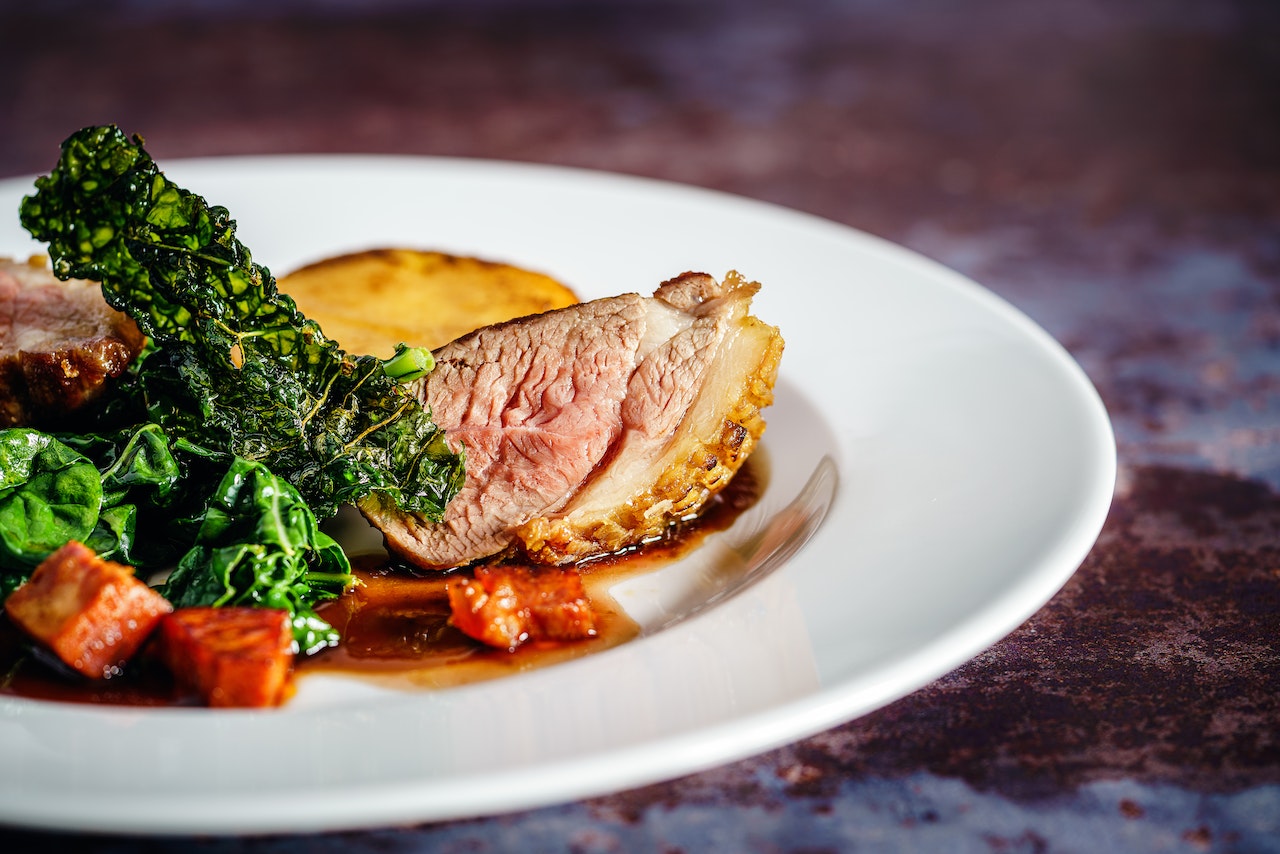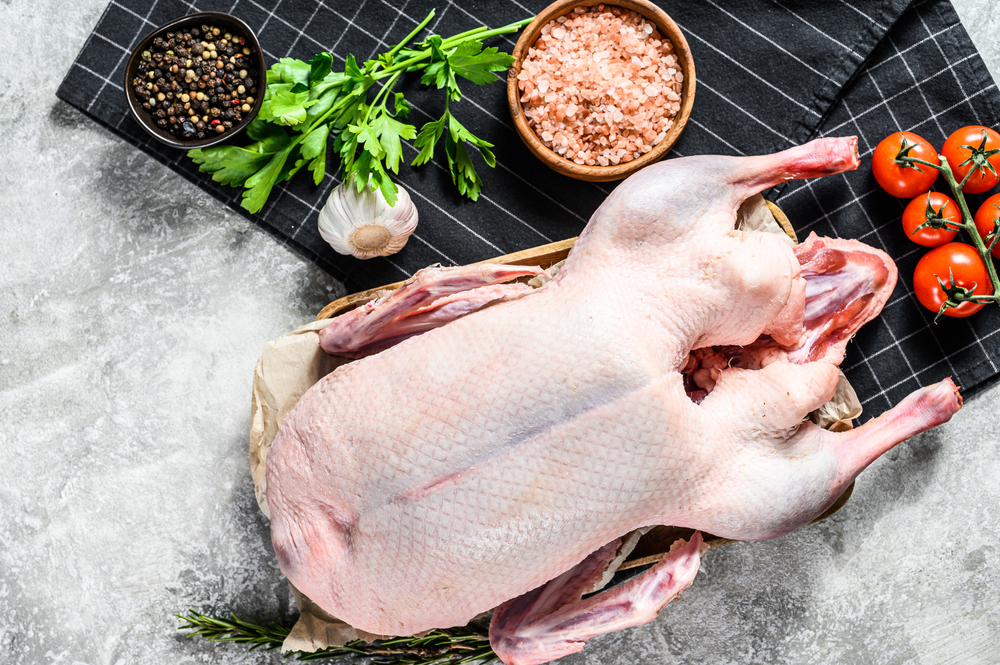Reheating duck can be a bit tricky because it is a delicate meat that can easily dry out if not reheated properly. However, with the right techniques, reheating leftover duck can be just as delicious as when it was first served. In this article, I will share some tips and tricks on how to reheat duck and keep it succulent.
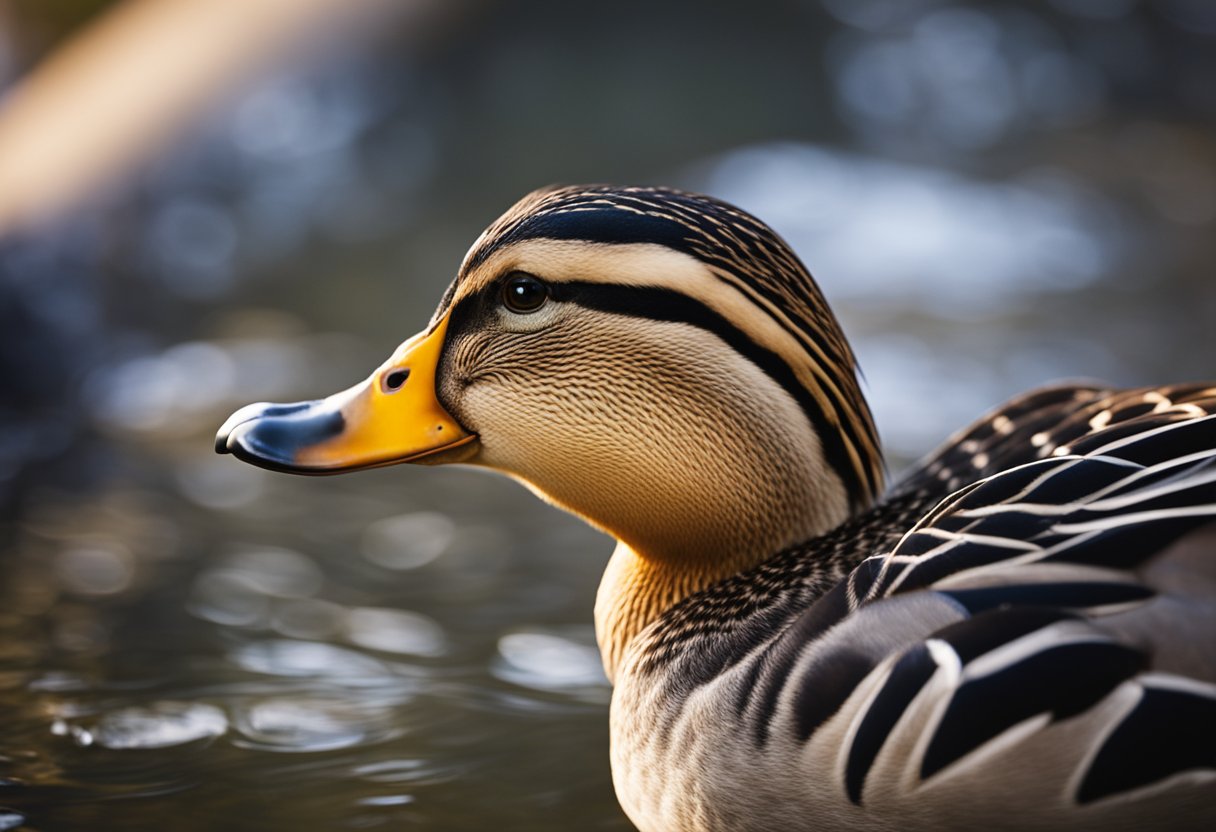
Before we dive into the reheating methods, it’s important to understand duck meat. Duck has a unique flavor and texture that sets it apart from other poultry.
It is high in fat, which gives it a rich and tender taste. When reheating duck, it’s important to keep this in mind and avoid overcooking it, which can cause the meat to become tough and dry.
There are several ways to reheat duck, including using an oven, stove, microwave, or air fryer. Each method has its own advantages and disadvantages, so it’s important to choose the one that works best for you.
In the following sections, I will guide you through the different methods and provide some tips for reheating duck to perfection.
Key Takeaways
- Duck is a delicate meat that can easily dry out if not reheated properly.
- There are several ways to reheat duck, including using an oven, stove, microwave, or air fryer.
- To keep the meat succulent, it’s important to avoid overcooking and to use the right reheating method.
Understanding Duck Meat
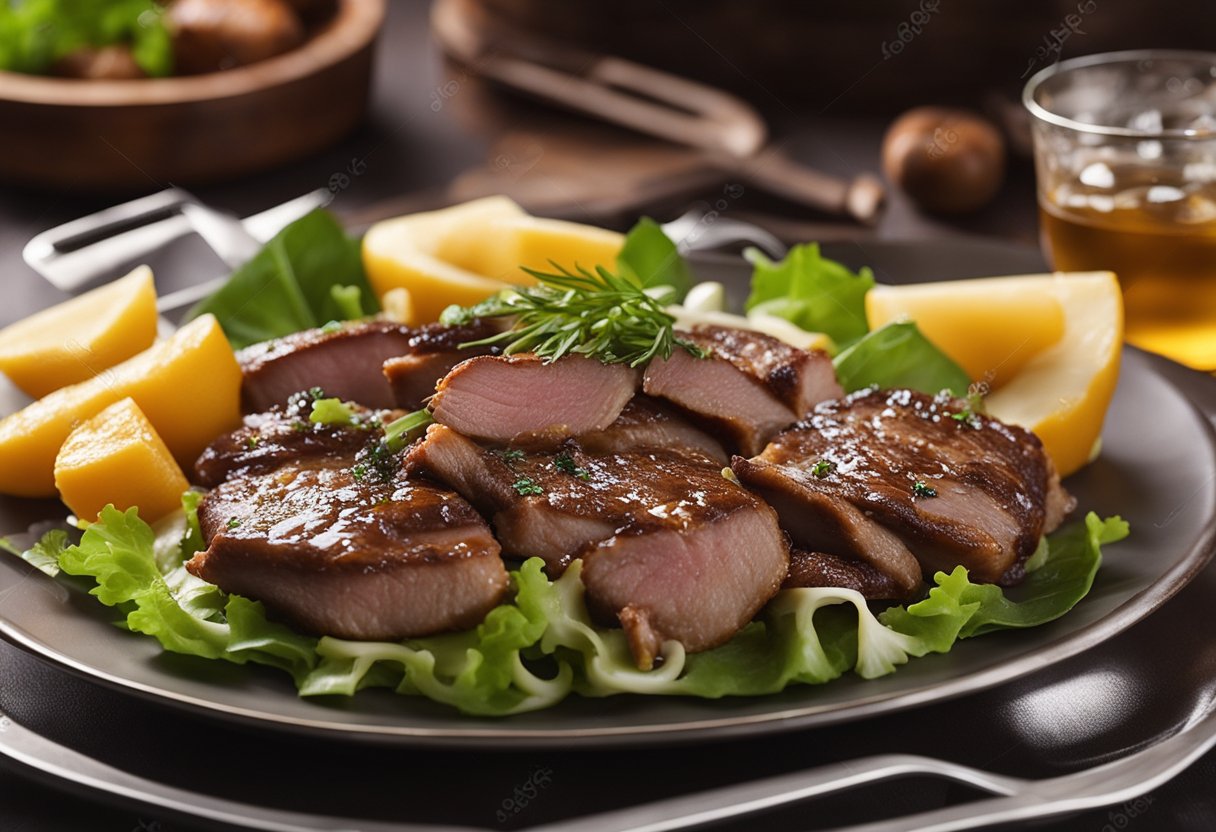
As a delicacy, duck meat is a popular choice in many cuisines around the world. It has a unique flavor and texture that sets it apart from other poultry meats like chicken and turkey.
In this section, I will discuss the characteristics of duck meat, including its protein content, fat content, and other important factors to consider when reheating duck.
Duck Meat Characteristics
Duck meat is known for its rich, gamey flavor and tender texture. It is also a good source of protein, with a 3-ounce serving containing around 20 grams of protein.
However, it is important to note that duck meat is also higher in fat than other poultry meats, with a 3-ounce serving containing around 8 grams of fat.
When reheating duck, it is important to keep these characteristics in mind. Because duck meat is higher in fat, it can dry out quickly if not reheated properly. To avoid this, it is recommended to reheat duck slowly and at a low temperature, such as in an oven set to 300°F.
Another important factor to consider when reheating duck is the type of dish it was originally cooked in. If the duck was cooked in a sauce or gravy, it may be easier to reheat in a saucepan on the stove over low heat. This will help to keep the meat moist and prevent it from drying out.
In summary, duck meat is a delicious delicacy that requires careful consideration when reheating. Understanding its unique characteristics, such as its protein and fat content, can help ensure that the meat stays moist and flavorful when reheated.
Storing Leftover Duck
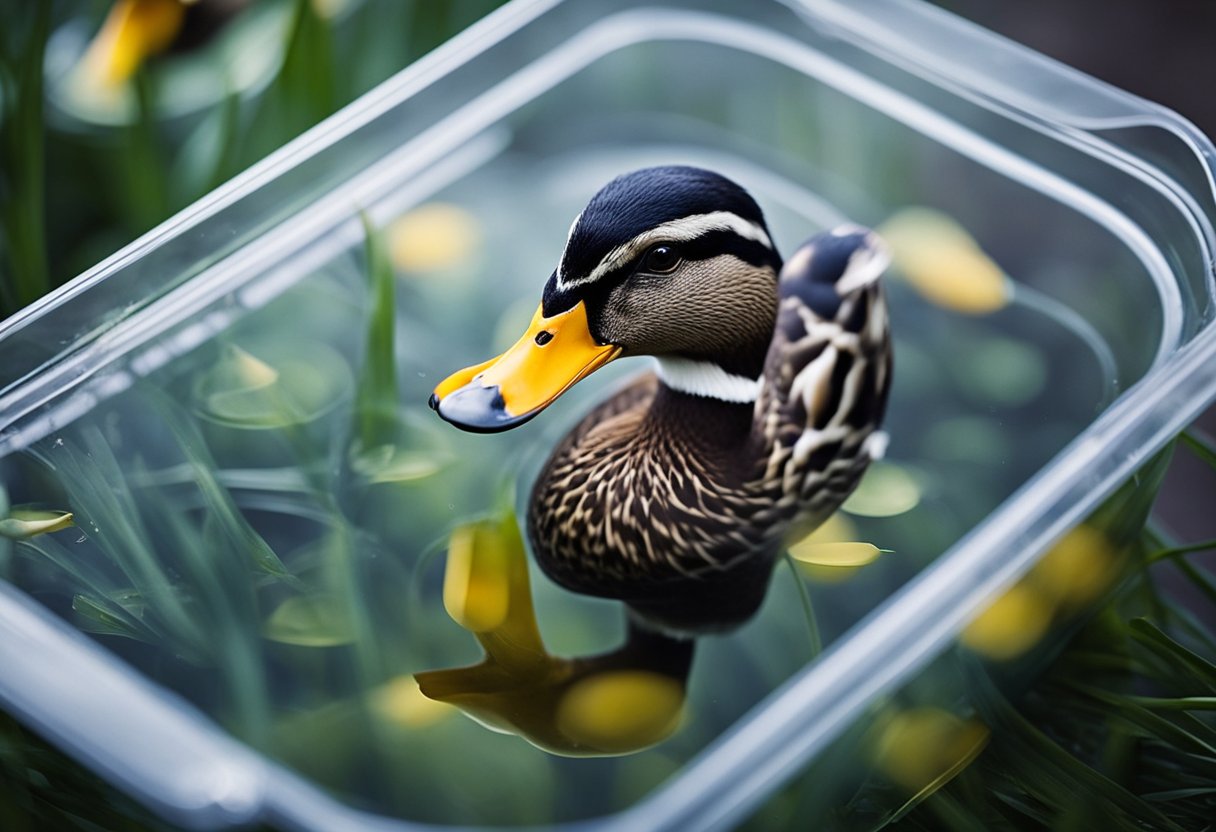
When it comes to storing leftover duck, there are a few things to keep in mind to ensure that it stays fresh and safe to eat. Here are some tips on how to store leftover duck properly:
Refrigerating Duck
If you plan to eat your leftover duck within a few days, refrigerating it is the best option. To refrigerate your leftover duck, follow these steps:
- Let the duck cool down to room temperature before refrigerating it.
- Place the duck in an airtight container or wrap it tightly with plastic wrap.
- Label the container with the date you stored the duck.
- Store the container in the refrigerator.
Leftover duck can be stored in the refrigerator for up to 3-4 days. Make sure to check for any signs of spoilage before eating it. If the duck smells off or has a slimy texture, it’s best to discard it.
Freezing Duck
If you don’t plan to eat your leftover duck within a few days, freezing it is a good option. To freeze your leftover duck, follow these steps:
- Let the duck cool down to room temperature before freezing it.
- Place the duck in an airtight container or wrap it tightly with plastic wrap.
- Label the container with the date you stored the duck.
- Store the container in the freezer.
Leftover duck can be stored in the freezer for up to 2-3 months. Make sure to thaw the duck properly before reheating it.
When reheating frozen duck, it’s important to thaw it in the refrigerator first. This will ensure that the duck reheats evenly and doesn’t become dry or overcooked.
Overall, storing leftover duck is easy and can be done in either the refrigerator or freezer. Just remember to use airtight containers and label them with the date you stored the duck to ensure it stays fresh and safe to eat.
Reheating Duck: The Basics
When it comes to reheating duck, there are a few things to keep in mind to ensure that the meat stays succulent and flavorful. In this section, I will cover the basics of reheating duck, including the optimal time and temperature, as well as tips for preventing dryness and maintaining moisture.
Reheating Time and Temperature
To ensure that your duck is reheated thoroughly and evenly, it is important to use the right time and temperature. The ideal temperature for reheating duck is between 300°F and 350°F (150°C and 175°C), and the recommended reheating time is around 20 minutes.
However, the exact time and temperature may vary depending on the size and thickness of the duck, as well as your personal preferences.
To ensure that the internal temperature of the duck reaches at least 165°F (74°C), you can use a meat thermometer to check the temperature at the thickest part of the meat. This will help ensure that the duck is safe to eat and that it has been reheated properly.
Preventing Dryness and Maintaining Moisture
One of the biggest challenges when reheating duck is preventing it from drying out. To maintain the moisture and flavor of the meat, there are a few things you can do:
- Add moisture: To prevent the duck from drying out, you can add a small amount of liquid to the dish before reheating it. This can be broth, water, sauce, or soup. Adding moisture will help keep the meat tender and juicy.
- Cover the dish: To prevent the duck from drying out, you can cover the dish with aluminum foil or a lid. This will help trap the moisture in the dish and prevent it from evaporating.
- Don’t overcook: Overcooking the duck can cause it to become dry and tough. To prevent this, be sure to check the internal temperature of the meat regularly and remove it from the oven as soon as it reaches the desired temperature.
By following these simple tips, you can ensure that your reheated duck is succulent, flavorful, and moist.
Reheating Duck in the Oven
When it comes to reheating duck, the oven is a reliable and easy-to-use option. Here are two sub-sections that will help you reheat your duck in the oven while keeping it juicy and delicious.
Using an Oven-Safe Dish
To start, preheat your oven to 350°F (175°C). While the oven is heating up, place the duck in an oven-safe dish. You can use a glass or ceramic dish, or even a cast-iron skillet. Just make sure that it is oven-safe and can withstand the heat.
Maintaining Juiciness with Aluminum Foil and Broth
Next, pour around a quarter of a cup of liquid (broth, water, sauce, or soup) on top of the duck. This will help keep the meat moist and juicy while it reheats. Cover the dish with aluminum foil, making sure to seal it tightly. This will help trap in the moisture and prevent the duck from drying out.
Place the dish in the center of the oven and reheat for 20 minutes. After 20 minutes, remove the aluminum foil and continue to roast the duck for another 5-10 minutes until the skin is crispy and the meat is heated through.
By using an oven-safe dish and covering the duck with aluminum foil and broth, you can maintain the juiciness of the meat while reheating it in the oven. This method is simple and reliable, making it a great option for reheating duck.
Reheating Duck on the Stove
When it comes to reheating duck, the stove is a simple and quick way to get the job done. Here are two popular methods for reheating duck on the stove: stir-frying and braising.
Stir-Frying Duck
Stir-frying is a great option for reheating duck because it can help bring back some of the crispy texture that may have been lost during the initial cooking process. Here’s how to do it:
- Cut the duck into bite-sized pieces. This will help it cook more evenly and quickly.
- Heat up a pan or wok on medium-high heat. Add a tablespoon of oil.
- Once the oil is hot, add the duck to the pan. Stir-fry for 2-3 minutes until the duck is heated through and slightly crispy.
- Serve immediately.
Braising Duck
Braising is another popular method for reheating duck on the stove. This method involves cooking the duck low and slow in a flavorful liquid. Here’s how to do it:
- Cut the duck into large pieces.
- Heat up a pan on medium-high heat. Add a tablespoon of oil.
- Once the oil is hot, add the duck to the pan. Brown the duck on all sides for 2-3 minutes.
- Add enough liquid (such as chicken broth, red wine, or soy sauce) to cover the duck about halfway.
- Bring the liquid to a simmer, then reduce the heat to low and cover the pan.
- Let the duck braise for 10-15 minutes, or until it is heated through and tender.
- Serve immediately.
Both of these methods are great for reheating duck on the stove. Stir-frying is perfect for when you want to add some crispiness back to the duck, while braising is great for when you want a more tender and flavorful result.
Reheating Duck in the Microwave
When it comes to reheating duck, the microwave is a quick and convenient option. However, it’s important to do it right to avoid overcooking or drying out the meat. Here’s how I do it:
Using a Microwave-Safe Dish
First, I make sure to use a microwave-safe dish. Glass or ceramic dishes are good options, but avoid using plastic containers as they can melt or release harmful chemicals when heated.
Next, I place the leftover duck slices evenly on the dish, making sure not to overcrowd them. If needed, I trim off any excess fat or undesirable parts of the meat.
Reheating at Medium Power
To reheat the duck, I set the microwave to medium power. This helps to prevent the meat from becoming tough or rubbery.
I start by microwaving the duck for 30 seconds at a time, checking the temperature after each interval. Once the duck reaches a safe temperature of 165°F (74°C), I remove it from the microwave and let it rest for a minute or two before serving.
If the duck is still cold in the middle, I continue microwaving it in 10-second intervals until it’s fully heated through.
To keep the meat moist, I cover the dish with a damp paper towel or plastic wrap while microwaving. This helps to trap the moisture and prevent it from evaporating.
Overall, reheating duck in the microwave is a quick and easy option as long as you use a microwave-safe dish, reheat at medium power, and check the temperature regularly.
Reheating Duck in the Air Fryer
As a food lover, I always make sure that I have the best possible experience when it comes to reheating leftovers. One of my favorite ways to reheat duck is by using an air fryer. Not only does it help retain the crispy skin, but it also keeps the meat juicy and tender.
Here are the steps I follow to reheat duck in the air fryer:
- Let the duck rest at room temperature: Before reheating, allow the duck to rest at room temperature for 10-15 minutes. This will help relax the proteins and ensure that the meat doesn’t get tough from going cold to hot too quickly. If you have a whole duck, let it rest for 25 minutes.
- Preheat the air fryer: Set your air fryer to 375 degrees Fahrenheit and preheat it for 2-3 minutes. This will ensure that the duck is reheated gently without overcooking or drying out.
- Reheat the duck: Once the air fryer is preheated, place the duck in the basket, skin side up. You can also sprinkle some water or melted butter on top of the meat to keep it moist. Cook for 5-7 minutes or until the internal temperature reaches 165 degrees Fahrenheit.
- Serve and enjoy: Once the duck is reheated, remove it from the air fryer and let it rest for a few minutes before serving. This will help the juices redistribute and keep the meat tender.
Using an air fryer is one of the best ways to reheat duck because it helps retain the crispy skin and keeps the meat juicy and tender.
Just remember to let the duck rest at room temperature before reheating, preheat the air fryer, and cook until the internal temperature reaches 165 degrees Fahrenheit. With these simple steps, you can enjoy delicious reheated duck every time.
Additional Reheating Methods

If you don’t have an oven or microwave, or if you’re looking for more creative ways to reheat your leftover duck, there are a few additional methods you can try.
Reheating Duck in a Slow Cooker
One option is to reheat your duck in a slow cooker. This method is especially useful if you’re reheating a large quantity of duck, such as for a party or family gathering. To reheat duck in a slow cooker, follow these steps:
- Place the leftover duck in the slow cooker.
- Add a cup or two of chicken or duck stock to the slow cooker.
- Set the slow cooker to low heat and let the duck reheat for 2-3 hours, or until it’s heated through.
The slow cooker method is great because it allows the duck to reheat slowly, which helps to keep it moist and tender. Plus, the added stock will infuse the duck with extra flavor.
Making Duck Soup
Another option is to turn your leftover duck into soup. This method is perfect if you have a smaller amount of duck leftover, or if you’re looking for a different way to enjoy it. To make duck soup, follow these steps:
- Chop up any leftover duck meat and set it aside.
- In a large pot, sauté some onions, carrots, and celery until they’re soft.
- Add the leftover duck meat to the pot, along with some chicken or duck stock.
- Bring the mixture to a boil, then reduce the heat and let it simmer for 20-30 minutes.
- Season the soup with salt, pepper, and any other herbs or spices you like.
Duck soup is a great way to use up leftover duck, and it’s perfect for a cold winter day. Plus, you can add other ingredients to the soup, such as noodles or vegetables, to make it even heartier.
Overall, there are many ways to reheat leftover duck, from traditional methods like the oven and microwave to more creative options like the slow cooker and soup. Experiment with different methods to find the one that works best for you, and enjoy your delicious leftover duck in a new way.
Tips for Reheating Duck
When it comes to reheating duck, there are a few tips that can help you achieve the best results. Here are some of my go-to tips for reheating duck:
Use a Meat Thermometer
One of the most important things to keep in mind when reheating duck is to ensure that it is heated to a safe temperature.
To do this, I recommend using a meat thermometer to check the internal temperature of the duck. The USDA recommends reheating duck to an internal temperature of 165°F (74°C) to ensure that it is safe to eat.
Avoid Overcooking
Overcooking can make the duck dry and tough, so it’s important to avoid it. To prevent overcooking, I recommend reheating the duck slowly and at a low temperature. This will help ensure that the duck stays tender and juicy.
Steaming
Steaming is another great option for reheating duck. It’s an easy and quick method that helps prevent the duck from becoming soggy. To steam duck, simply bring a pot of water to a boil and place the duck in a steamer basket. Steam for 5-7 minutes or until the duck is heated through.
Roast Duck
If you’re reheating roast duck, I recommend placing it in a preheated oven at 350°F (175°C) for 10-15 minutes. To prevent the duck from becoming dry, you can add a little melted butter or olive oil to the pan. You can also add some potatoes to the pan to roast alongside the duck.
Leftover Roast Duck
If you have leftover roast duck, you can reheat it in the microwave. Place the duck in a microwave-safe bowl and cover it with a damp paper towel. Microwave on high for 1-2 minutes or until the duck is heated through.
By following these tips, you can reheat duck to perfection and enjoy all of its delicious flavors.
Frequently Asked Questions
How long should I reheat duck in the microwave?
When reheating duck in the microwave, it’s important to do it slowly to avoid overcooking or drying out the meat. Depending on the power of your microwave, it’s recommended to reheat duck for about 1-2 minutes on medium heat, then check the internal temperature with a meat thermometer to ensure it has reached at least 165°F.
What is the best way to reheat Peking duck?
Peking duck is best reheated in the oven to ensure the skin stays crispy. Preheat your oven to 350°F, then place the duck on a baking tray and cover it with foil.
Reheat the duck for about 10-15 minutes, or until it’s heated through. Remove the foil and broil the duck for a few minutes to crisp up the skin.
What is the recommended way to reheat duck leg?
To reheat duck leg, it’s best to use the oven. Preheat your oven to 350°F, then place the duck leg on a baking tray and cover it with foil. Reheat the duck leg for about 10-15 minutes, or until it’s heated through. Remove the foil and broil the duck leg for a few minutes to crisp up the skin.
Can I reheat crispy duck in the oven?
Yes, you can reheat crispy duck in the oven. Preheat your oven to 350°F, then place the duck on a baking tray and cover it with foil. Reheat the duck for about 10-15 minutes, or until it’s heated through. Remove the foil and broil the duck for a few minutes to crisp up the skin.
Is it safe to reheat smoked duck breast?
Yes, it’s safe to reheat smoked duck breast. You can reheat it in the oven or microwave, but it’s recommended to use the oven to maintain the texture and flavor.
Preheat your oven to 350°F, then place the duck breast on a baking tray and cover it with foil. Reheat the duck breast for about 10-15 minutes, or until it’s heated through.
Can I microwave leftover duck?
Yes, you can microwave leftover duck, but it’s important to do it slowly to avoid overcooking or drying out the meat.
Depending on the power of your microwave, it’s recommended to reheat duck for about 1-2 minutes on medium heat, then check the internal temperature with a meat thermometer to ensure it has reached at least 165°F.


